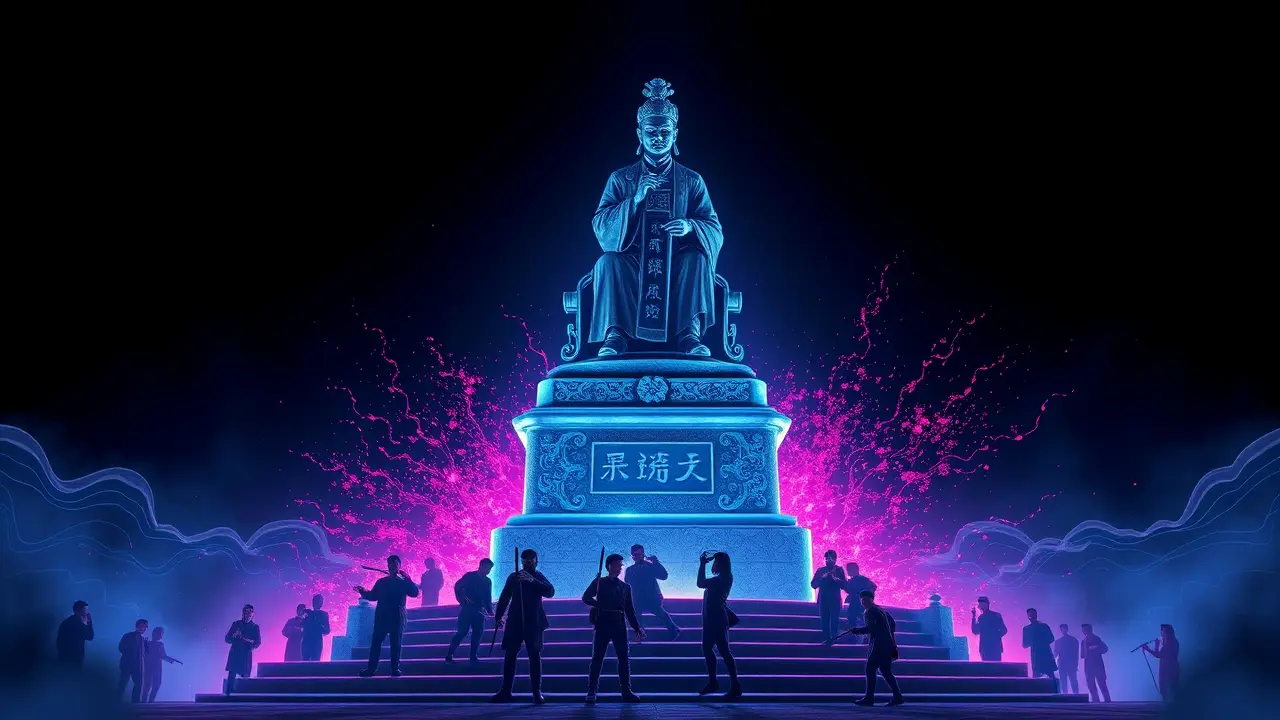
SciencearchaeologyCultural Heritage
Chinese Public Defaces Statue of Infamous Chancellor Qin Hui
RO
Robert Hayes
6 hours ago7 min read
The public defacement of the statue of Qin Hui, the infamous Southern Song dynasty chancellor, represents far more than mere vandalism; it is a visceral political act echoing through eight centuries of Chinese history, a modern manifestation of a national narrative meticulously cultivated around loyalty, betrayal, and the enduring cult of the patriot. To understand the fury directed at this bronze effigy and that of his wife, Wang, one must first grasp the foundational mythos of Yue Fei, the general whom Qin Hui conspired to have executed in 1142 under Emperor Gaozong.Yue Fei’s legend is the bedrock of Chinese patriotic education—a military genius on the cusp of reclaiming northern territories from the Jurchen-led Jin dynasty, his campaign famously cut short by a duplicitous court more interested in appeasement than victory. His death, orchestrated by Qin Hui on trumped-up charges, transformed him into the ultimate symbol of unyielding loyalty to the Han Chinese nation, a martyr whose story is taught to schoolchildren and whose tomb in Hangzhou remains a site of pilgrimage.The act of defacing Qin Hui’s statue, a recurring phenomenon at various tourist sites, is thus a ritualistic purification, a physical condemnation of the archetypal traitor. This public performance aligns perfectly with the state’s own historical orthodoxy, which lionizes figures like Yue Fei to bolster a narrative of national unity and resistance against external threats, a narrative with potent contemporary resonances regarding Taiwan and other territorial claims.Yet, beneath this surface-level consensus lies a more complex historical debate. Some scholars, operating at the fringes of accepted discourse, suggest that Qin Hui was merely the instrument of an emperor who feared a victorious general returning with an army loyal to him rather than the throne—a classic case of imperial realpolitik where the chancellor became the scapegoat for a sovereign’s decision.This nuanced view, however, is drowned out by the public’s cathartic need for a clear villain. The defacements are not spontaneous riots but calculated acts of symbolic justice, a way for ordinary citizens to participate in the moral ordering of their history, to side unequivocally with the hero against the villain.In this, the Chinese public and the state find a rare harmony: both have a vested interest in maintaining the stark dichotomy of Yue Fei’s righteousness and Qin Hui’s treachery. The statue, therefore, is not merely a representation of a historical figure but a permanent defendant in the court of public opinion, its repeated vandalism serving as a continuous verdict. It is a fascinating case study in how historical memory is not just preserved in books but actively enforced through public ritual, a tradition that connects modern Chinese nationalism directly to the moral conflicts of the 12th century, proving that some political battles are never truly over.
#editorial picks news
#Qin Hui
#Yue Fei
#Chinese history
#public sentiment
#historical figures
#cultural memory
Stay Informed. Act Smarter.
Get weekly highlights, major headlines, and expert insights — then put your knowledge to work in our live prediction markets.
© 2025 Outpoll Service LTD. All rights reserved.